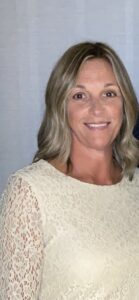Six Years of Using the Behavioral Health Screen in bhworks for NJ School District
Jennifer DiStefano, MA, SAC, has been helping students in the Cherry Hill School District for 21 years now. Cherry Hill is a township within Camden County, N.J., and just 10 miles east of Philadelphia, Pa. The district has almost 11,000 students in two high schools; one alternative high school; three middle schools; 12 elementary schools; and an early childhood center. Jennifer is one of six student assistant counselors (SAC) who are each assigned to a secondary school building.
Since 2016, Cherry Hill has been using bhworks, the student mental health software system from mdlogix, and its Behavioral Health Screen (BHS) to universally screen all students in 9th-12th grades in the two high schools. It has to be voluntary and with parental consent. They don’t screen in the alternative high school as it has all the onsite services students need.
Mental Health Task Force
The district has had a mental health task force since 2003 to proactively address youth behavioral/mental health issues. They created programs with financial help and held events with a municipal alliance that provided volunteers. In those days, the school district used the Columbia University teen screen starting in 2005, but when that was sold some years later, they continued for a while without any screening program. Today’s task force consists of the superintendent, three assistant superintendents, Jennifer and the five other student assistant counselors, teachers, local mental health experts, staff from the mayor’s office, and local providers.
Cherry Hill experienced multiple tragic losses in the past. An administrator saw a bhworks presentation during an education and health conference he attended. It was early 2016 when Cherry Hill began using bhworks software to universally screen students with its BHS. The BHS identifies mental health problems and psychosocial risk factors. It consists of psychiatric symptom scales and risk behaviors that cover all the psychosocial areas suggested by best practice guidelines. Results are immediately scored, summarized, and securely sent to a designated clinician for review. Most clinicians can scan the report within 10 seconds.
The BHS screens across the following domains:
● Suicidality ● Anxiety ● Depression ● Substance Use ● Eating Disorders ● Traumatic Stress
● Self-Harm ● Psychosis ● Gun Access ● Exercise ● Bullying ● Physical/Sexual Abuse
● Work/School Activities ● Family Environment ● General Medical
Different versions of the BHS have been developed for multiple age groups and care settings. In addition to the BHS, bhworks gives users access to a variety of screeners, intake forms, and outcomes measures. A range of tools and forms based on the market are available within bhworks; additional tools can be readily added.
Empirical Support for the BHS
Initially developed through a collaboration with Children’s Hospital of Philadelphia (CHOP), bhworks and the BHS have been validated and researched by clinicians and experts in the fields of psychiatry, psychology, and pediatrics. The clinical utility of the tool has been strongly endorsed by a series of evaluations led by Guy Diamond, PhD; Joel Fein MD, MPH; and Matt Wintersteen, PhD.
For Cherry Hill, the BHS screenings have been a critical success in that they have been able to better understand students known to be struggling with mental health issues, and so important for suicide prevention, uncover those students who were struggling with mental health issues, but flying under everyone’s radar. They utilize contracted mental health experts to aid in the debriefing, consultation, and referral of students identified during screening days.
“We are no longer in crisis the way we used to be,” DiStefano said. “The screening is eye opening for students and their families, and that’s why it’s important to do. Awareness followed by appropriate services prevents harmful outcomes.”
The district didn’t conduct screenings in 2020 during the pandemic as the students weren’t in the school buildings. In 2021, they hadn’t returned to a typical school year, with a mix of virtual and in-school attendance; so they offered for kids to come in before school to get screened.
Said DiStefano, “Students who took it were so thankful, but each year the response numbers vary. We send out alerts and do full court promotion.”
Like the rest of the country, their treatment services are at capacity and there is a provider shortage. Students are on waiting lists and telehealth referrals have a backlog. Even living near a major metropolitan tri-state area hasn’t helped in securing enough providers.
Fortunately, in New Jersey there is a free service, PerformCare in coordination with the New Jersey Children’s System of Care, for parents to call and get intake within their home. It at least gets them started. Another national program, Care Solace, allows parents to use health insurance to help them connect to a provider. “It remains a struggle for sure,” DiStefano commented.
Advice for Schools Starting Universal Screening
“Absolutely you need the backing and support of the central administration in order to run with validity and of course, finances run the program,” DiStefano explained. “Have access to clinicians and pay them to do the screening. We got lucky that ours are in-house now. I used to find them myself. Once that’s all in place, a screening can be run like clockwork.”
Cherry Hill uses its own in-house program consent forms in addition to the BHS within the bhworks software platform. The largest number of students screened was 300, and that was with a lot of multi-tasking and support.
“Over time you learn how to schedule screenings and the time of day not to administer it; definitely finish before the buses leave. I have learned a lot over the years about what works for my schools,” said DiStefano. “And do not get upset when only 60 students show up. For those 60, it’s important.”
Editor’s Note: Jennifer DiStefano can be reached at JDiStefano@chclc.org to share her experience with colleagues.

Jennifer DiStefano
October 12, 2022


